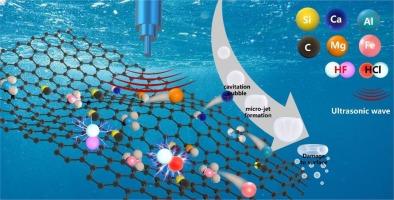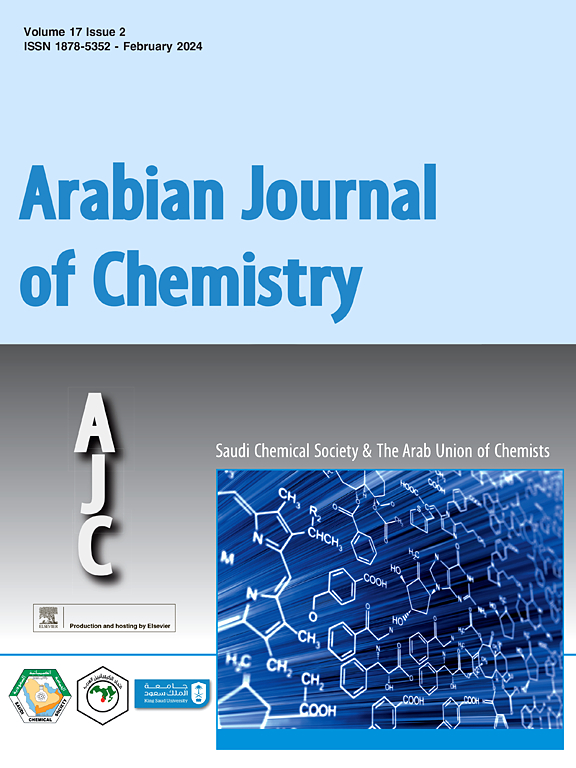Study on the thermal field material of FZ-Si crystal waste graphite purified by ultrasonic enhanced acid leaching
IF 5.2
2区 化学
Q2 CHEMISTRY, MULTIDISCIPLINARY
引用次数: 0
Abstract
This study examines the acid-leaching and purification process of waste graphite in the production of Czochralski monocrystalline silicon. The optimal leaching conditions are identified as a liquid-to-solid ratio of 6, a leaching temperature of 70 °C, an acid concentration of 8 mol, and a leaching time of 60 min. The use of hydrofluoric acid, sulfuric acid, and nitric acid in the acid-leaching process increases the fixed carbon content of waste graphite from ∼94 % to ∼98.5 %. To address the low fixed carbon content that cannot be achieved through conventional acid-leaching, a method combining ultrasonic intensification with hydrofluoric and hydrochloric acid leaching is proposed and successfully implemented. Under ultrasonic enhancement conditions, the leaching effect is optimal at a temperature of 60 °C, acidity of 4 mol, and leaching time of 60 min. These results demonstrate that the introduction of ultrasound significantly strengthens the acid-leaching process. The method proposed in this study not only purifies waste graphite through acid-leaching but also elucidates the reaction behavior of various impurity elements during the leaching process. Overall, these findings provide a foundational basis for the recovery of waste graphite in the thermal field.

超声波强化酸浸法提纯 FZ-Si 晶体废石墨的热场材料研究
本研究探讨了在生产佐克拉尔基单晶硅过程中废石墨的酸浸出和提纯工艺。确定的最佳浸出条件为:液固比 6、浸出温度 70 °C、酸浓度 8 摩尔、浸出时间 60 分钟。在酸浸工艺中使用氢氟酸、硫酸和硝酸,可将废石墨的固定碳含量从 ∼94 % 提高到 ∼98.5 %。针对常规酸浸无法实现的低固定碳含量问题,提出并成功实施了超声波强化与氢氟酸和盐酸浸出相结合的方法。在超声波强化条件下,温度为 60 °C、酸度为 4 摩尔、浸出时间为 60 分钟时,浸出效果最佳。这些结果表明,超声波的引入大大加强了酸浸出过程。本研究提出的方法不仅能通过酸浸法净化废石墨,还能阐明各种杂质元素在浸出过程中的反应行为。总之,这些发现为在热领域回收废石墨提供了基础。
本文章由计算机程序翻译,如有差异,请以英文原文为准。
求助全文
约1分钟内获得全文
求助全文
来源期刊

Arabian Journal of Chemistry
CHEMISTRY, MULTIDISCIPLINARY-
CiteScore
10.80
自引率
3.30%
发文量
763
审稿时长
63 days
期刊介绍:
The Arabian Journal of Chemistry is an English language, peer-reviewed scholarly publication in the area of chemistry. The Arabian Journal of Chemistry publishes original papers, reviews and short reports on, but not limited to: inorganic, physical, organic, analytical and biochemistry.
The Arabian Journal of Chemistry is issued by the Arab Union of Chemists and is published by King Saud University together with the Saudi Chemical Society in collaboration with Elsevier and is edited by an international group of eminent researchers.
 求助内容:
求助内容: 应助结果提醒方式:
应助结果提醒方式:


